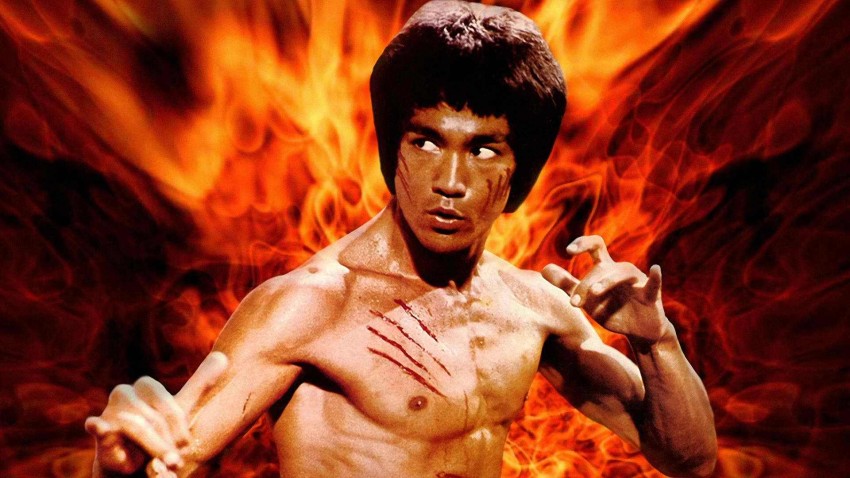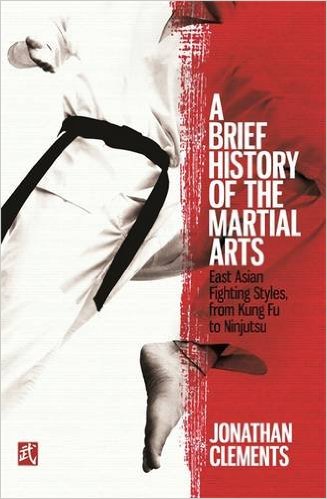Books: A Brief History of the Martial Arts
October 20, 2016 · 0 comments
By Paul Jacques.
 As a 12-year-old, I remember wandering the High Street in Mosley (Birmingham) and entering a martial arts shop. There wasn’t much I could afford, but I did buy a 50p pamphlet with a scratchy drawing of the human body, and an English translation on the “ancient Chinese martial art” of Dim Mak (‘Poison Touch’ ). Like some cliché from Stephen Chow’s Kung Fu Hustle I had stumbled across a form of ‘Five-Point Palm Exploding Heart Technique’ that Pai Mei would recognise.
As a 12-year-old, I remember wandering the High Street in Mosley (Birmingham) and entering a martial arts shop. There wasn’t much I could afford, but I did buy a 50p pamphlet with a scratchy drawing of the human body, and an English translation on the “ancient Chinese martial art” of Dim Mak (‘Poison Touch’ ). Like some cliché from Stephen Chow’s Kung Fu Hustle I had stumbled across a form of ‘Five-Point Palm Exploding Heart Technique’ that Pai Mei would recognise.
Of course, it was no such thing. It was a bad copy of an acupuncture chart with a dubious hand technique for striking at meridians. What this experience did teach me was a healthy scepticism for martial arts – although how to kill a man would have been nicer – that I kept in the back of my mind throughout my youthful years of judo, karate, atemi jutsu, and aikido: take nothing on face value.
Jonathan Clements’s Brief History of Martial Arts, also takes nothing on face value. Within the course of this book he grips the martial arts face, opens the mouth wide and takes a good long look at its history.
 Clements is no stranger to the deadly arts of the East, in fact he has literally married into them (one sequence of the book features a kung fu-off between his wife and a taiji master). His extensive language skills and even more wide-ranging itinerary sees him spending most of the year travelling within Japan and China, providing him with the means and opportunity to investigate, first-hand, historical evidence of the Shaolin temple, Chinese kung fu in its many forms including judo, karate, Taekwondo, sumo, ninjutsu, Jeet Kune Do, ninjutsu and many other forms of martial art.
Clements is no stranger to the deadly arts of the East, in fact he has literally married into them (one sequence of the book features a kung fu-off between his wife and a taiji master). His extensive language skills and even more wide-ranging itinerary sees him spending most of the year travelling within Japan and China, providing him with the means and opportunity to investigate, first-hand, historical evidence of the Shaolin temple, Chinese kung fu in its many forms including judo, karate, Taekwondo, sumo, ninjutsu, Jeet Kune Do, ninjutsu and many other forms of martial art.
Clements starts with the historical foundations of Chinese philosophy. We quickly trot through Laozi’s Daoism, Confucius and the influences of Sun Tzu. Along the way, Clements asks many questions, looking for answers in ancient texts, and travelling to faraway places for enlightenment, such as the Shaolin Temple, where he asks the priests if he can look at their records. All the time, he holds up the stated “truths” and comparing them against the bona fide evidence. But on this wonderful journey through the East, we begin to see that there is an elephant in the dojo that no one really wants to talk about: why can’t many of these ancient arts prove their lineage? As an example – and I’m not going to name names – Clements confronts one practitioner about his art’s history, which he claims is ancient, but Clements counters: how can this be, you only came up with its name 60 years ago, so what did you call it for the other 2000 years?
A Brief History of the Martial Arts walks a path between academic facts and a cracking good yarn; both enlightening and entertaining whilst trying to separate the fact from the fiction. Openly fictional accounts also contribute to the narrative, such as the legends of The Water Margin and Journey to the West. Partway through the book we leave China and migrate with the martial arts up the Ryukyu Islands to Japan, seeking new converts and new interpretations. In Japan we meet bushido, the way of the warrior, an idea familiar to all today. Japan seemingly has a better preserved history of the martial arts, but still plenty of misunderstandings and falsehoods to be exposed. There is one particular debunking here that I won’t spoil; just enjoy it, I know I did. Equally there are some great true histories to be revelled in.
The latter part of the book deals with the migration of martial arts as they make their own journey to the west in the late 19th and 20th century, generating their own amazing stories such as the judo lessons of the British suffragettes. Leaving no modern stone unturned, A Brief History of the Martial Arts has a very good look at modern media, highlighting where films, comics and cartoons got their ideas, and where they invented they own histories which may have accidently contaminated the truth.
There is not much that Clements doesn’t discuss in the wonderful book, my only disappointment was the lack of investigation into arts of the Philippines, Malaysia and Thailand, but no doubt those are for another day (sorry, Eskrima).
So, who is this book for? Certainly, those of a scholarly persuasion will find a gold mine in its exhaustive links to further reading. But just about anyone who is interested in the martial arts, real or fictional, will find page after page of fascinating histories and stories. I defy anyone to come away from this book without a deeper knowledge of all martial arts and an “I did not know that” expression on their face. This book successfully covers many martial arts’ stated origins, to become a force of one history.
A Brief History of the Martial Arts is out now from Robinson.
Leave a Reply